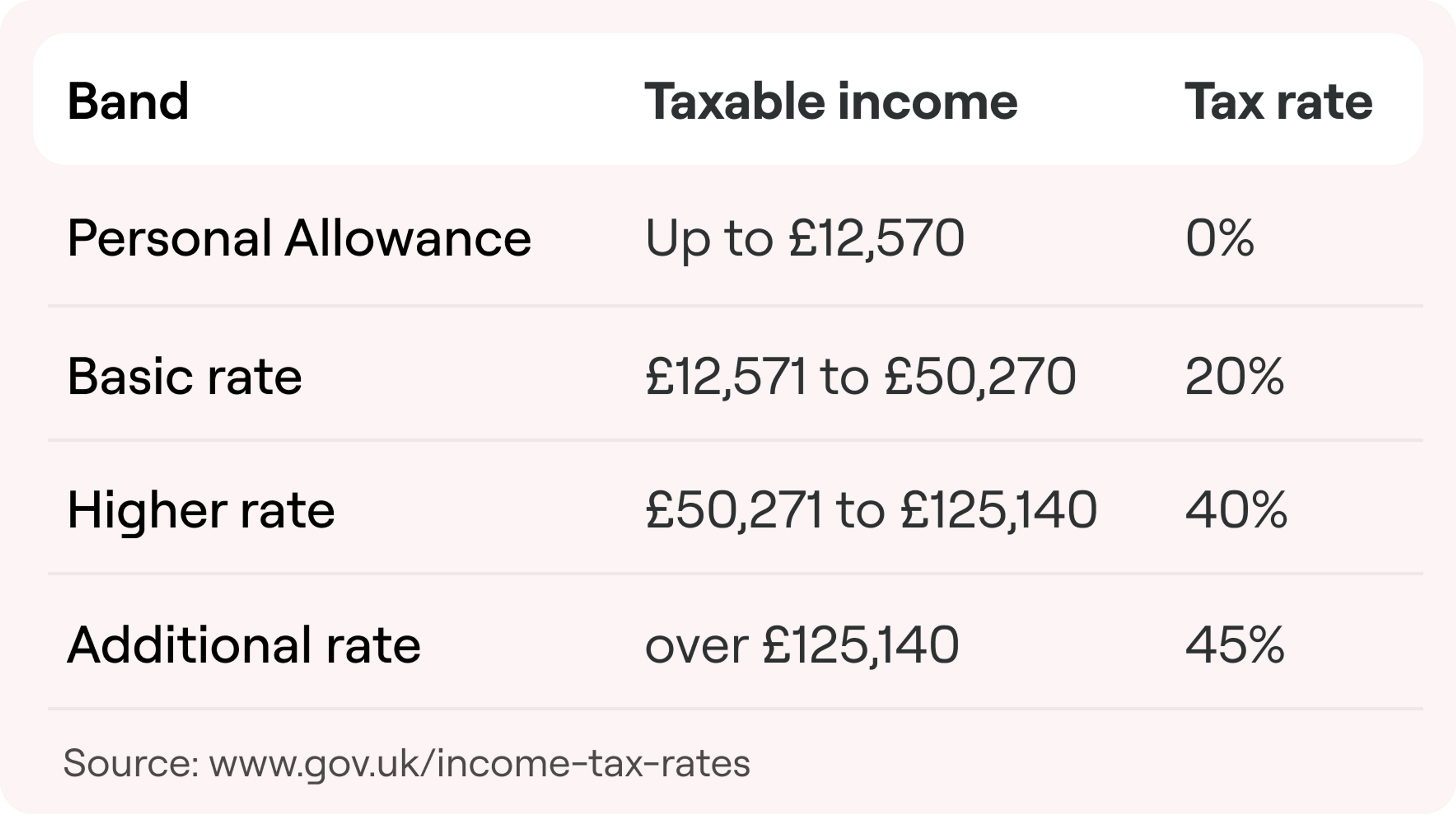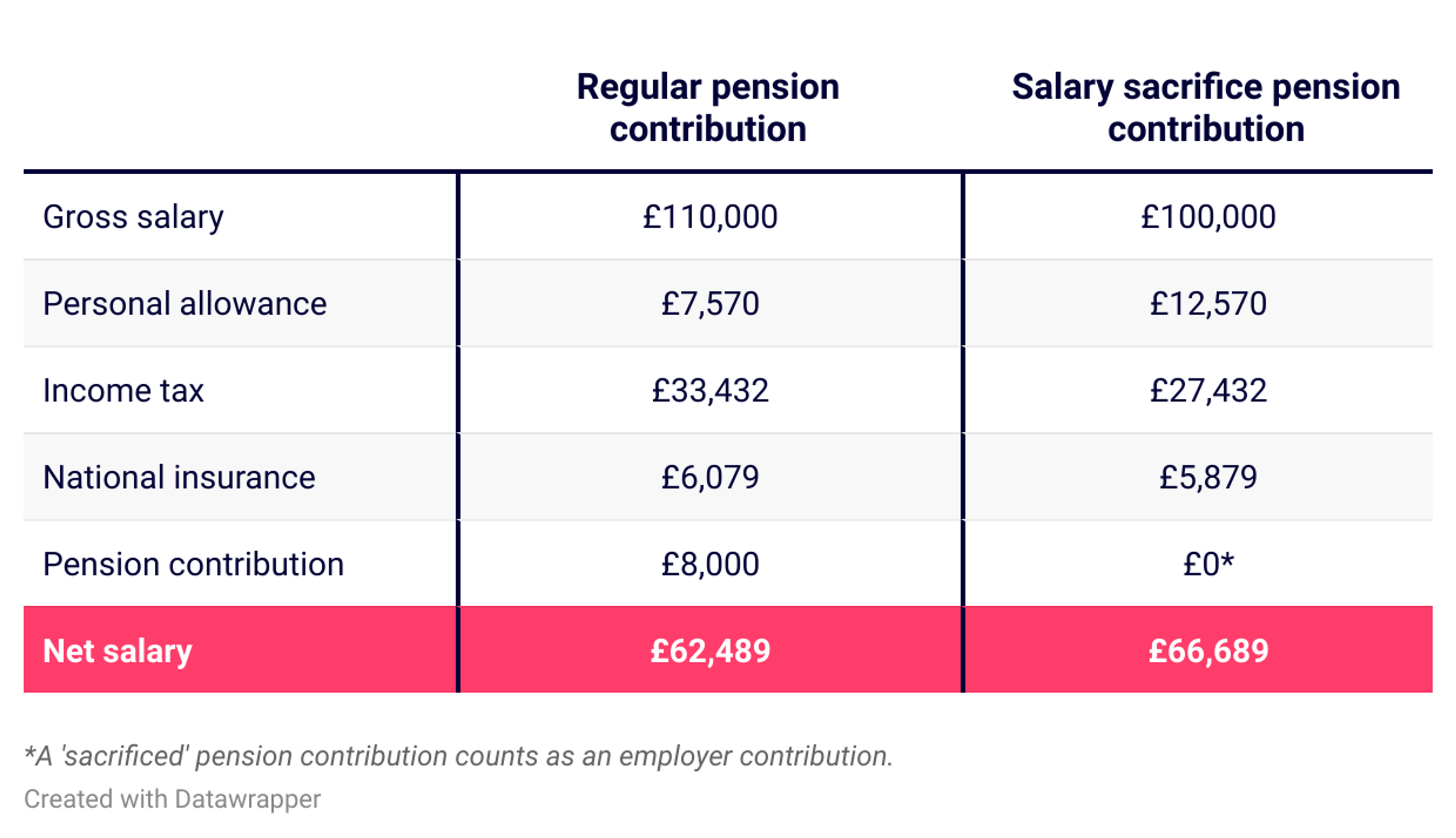4 minutes
How to Avoid the 60% Tax Trap
- By
- Murray Humphrey
Earning six figures or more? The taxman’s set a trap for you! But knowledge is power: here’s how to swerve it.

Hitting the magical six figures for your salary is a landmark moment in your career and definitely deserves the popping of a champagne cork or two.
Just be aware that anything you earn over this amount means you’re at risk of being taxed at a very hefty 60%. The good news is that, as ever with labyrinthine tax laws, there’s a way to limit this potential financial hit.
Everyone can earn a certain amount of money without being taxed on it. HMRC calls this the Personal Allowance, which currently stands at £12,570. Here are the current tax bands.

Once you start earning £100K, for every extra £2 you earn, your Personal Allowance is reduced by £1. The more your Personal Allowance reduces, the more tax you’ll be liable for.
If you earn £101,000, you’re £1000 over the line in the sand and so your Personal Allowance is reduced by £500.
If you earn £125,140 or more (the Personal Allowance amount of £12,570 x 2) your Personal Allowance is reduced to nothing.
The maths is complicated, but the bottom line is that you’re paying an income tax rate of 60% for the income between £100,000 and £125,140. But there is a way to stop the government taking a majority of money: your pension can come to the rescue.
Pensions v the taxman
If that income between £100,000 and £125,140 is getting taxed at 60%, you’ll be taking home £10,056 of it. That’s quite a reduction from the gross amount of £25,140.
But if you put £25,140 into your pension – the amount you earn over £100K – Tax Relief means it gets topped up by 25% by the government.
That means your £25,140 becomes £31,425. Instead of giving £15,084 to HMRC (60% of £25,140) they’ll be giving you £6,285 (25% Tax Relief top up on £25,140).
The most effective way to do this is with Salary Sacrifice. Instead of paying you a gross amount of £125,140 annually, you ask your employer to reduce your salary to £100,000 and contribute the difference into your pension.
As you pay National Insurance on your salary according to how much you earn, this will also reduce your NI contributions.
Increase your take home pay
If someone earns £110,000 per year, then they are £10,000 above the threshold at which the personal allowance begins to be reduced.
However, if the employee contributes £10,000 to their pension through salary sacrifice, their taxable income will not exceed £100,000, and the personal allowance remains untouched.

As shown in the table above, the employee’s net salary would rise by £4,200 when they use a salary sacrifice pension scheme. This comes from:
- £2,000 in tax savings from stopping the personal allowance reduction
- £200 savings on your National Insurance contributions
- £2,000 in extra tax relief from your pension contribution
How the last budget helped
If you’re worried that putting such a big chunk of money into your pension might put you at risk of another tax hit, we’re here to tell you that Chancellor Jeremy Hunt helped with that in the last budget.
If your salary is beyond the £100,000 mark, you might be the kind of earner that can contribute a significant sum into your pension annually.
Another HMRC stipulation is the amount you can contribute annually before they’ll tax you on it. This is the Annual Allowance. Previously £40,000, in the last budget the ceiling was raised to £60,000 per annum. You can contribute this amount into your pension without incurring any tax penalties during any tax year (e.g. between 6th April 2023 and 5th April 2024).
And if you’re worried that contributing such large sums into your pension regularly might mean more tax because you’ve exceeded something called the Lifetime Allowance, Mr Hunt had some further good news for you.
Up until April 2023, the absolute most you could put into your private pension without getting taxed on it during your whole working life was £1,073,100. Since 6 April 2023 you will not be taxed on any pension savings above this amount.
As an example, if you’d planned to contribute the maximum amount of your Annual Allowance of £60,000 annually, you could only do it for 18 years – and working lives are usually a lot longer.
If you’re planning on avoiding the 60% tax trap by regularly diverting tens of thousands of pounds into your pension, you’re no longer limited by how much you can contribute over the lifetime of your career. Your only limit is the Annual Allowance of £60,000.
Without a doubt, using your pension is an excellent way to escape the 60% tax trap and may also greatly enhance your retirement savings.
This blog isn't personal advice. The impact of pension and tax rules will depend on individual circumstances, so if you're unsure please seek advice before acting.
Penfold is the award-winning digital pension designed to help you take control of your savings and grow your wealth. Effortlessly combine old pensions into one smart plan, accessible anytime online or in our app. Get complete control over your pension future.
- Set up in less than five minutes
- Easily find & combine old pensions
- Top up, adjust or pause payments in a few taps
- One simple, low fee

Murray Humphrey
Penfold